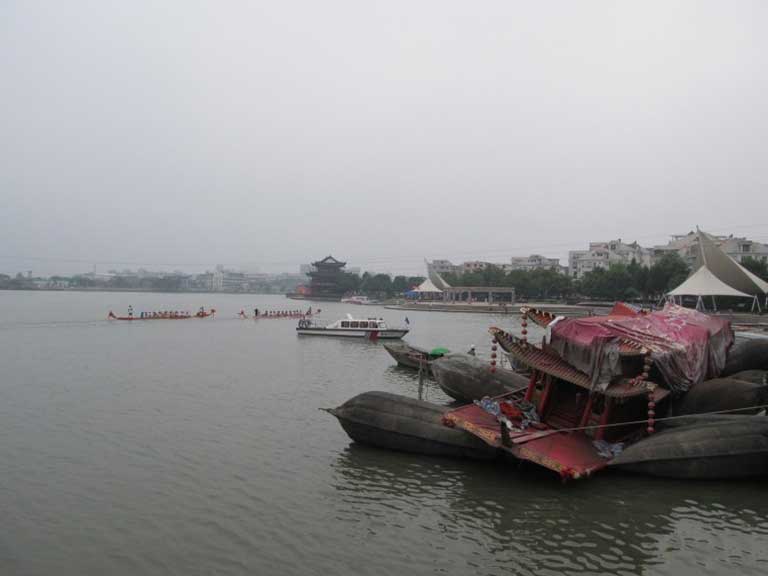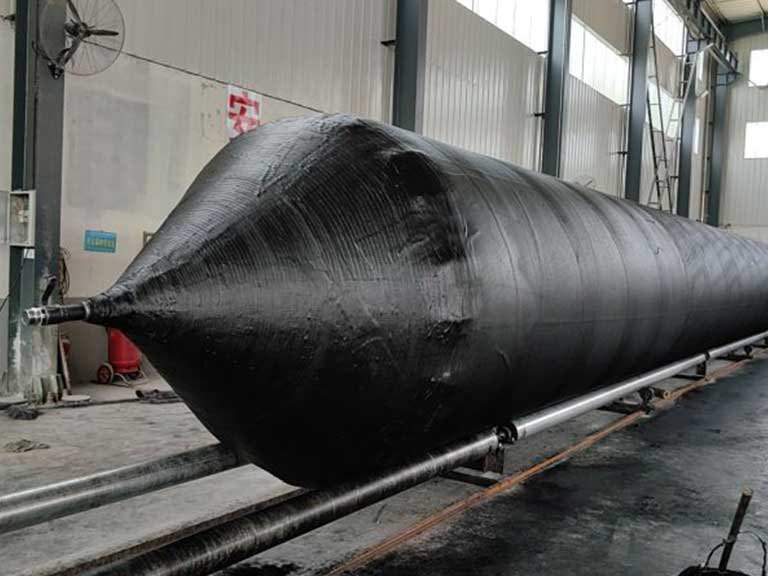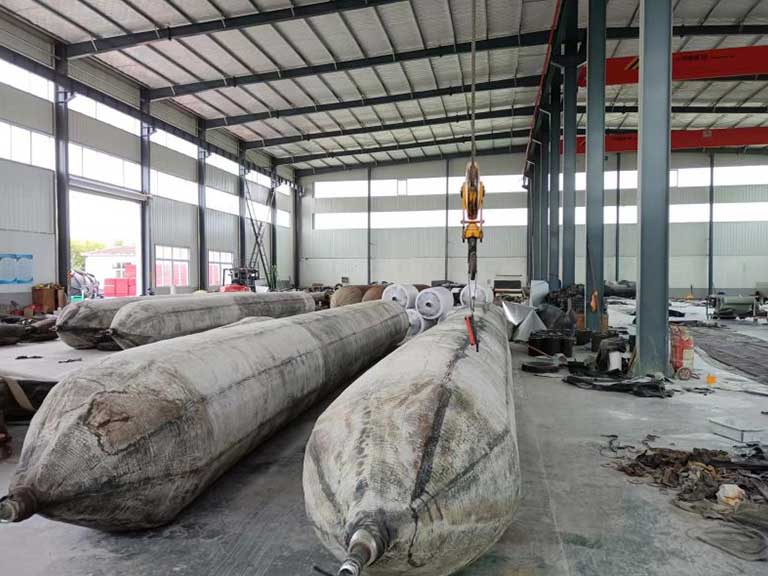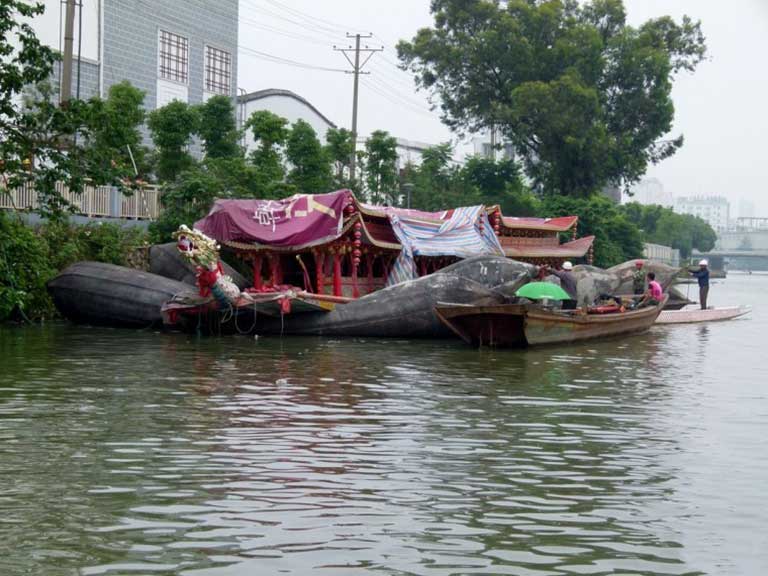Nautical salvage airbags are buoyancy devices used in nautical salvage. Marine salvage is the process of recovering a vessel and its cargo to their original position following a maritime mishap. Different types of marine salvage work may involve towing, refloating, or repairing a vessel. Nowadays, it is critical to ensure that coastal areas are free of oil and other hazardous pollutants. The majority of salvage work is now done by professional salvage businesses, who have their own specialized personnel and equipment.
Table of Contents
How To Salvage A Wreck?
To rescue a wreck, the salvors must refloat it. This can be accomplished using any of the five primary approaches listed below.
- Pumping out (draining water)
- Buoyancy lifting
- Lifting with Air
- Towing to surface
- Lifting with cranes
In some circumstances, it is preferable to employ many approaches. This is because each strategy has its advantages and downsides. This post will cover the five most popular types of marine salvage airbags. They are commonly used as floating bags to raise sunken ships.
- Totally Enclosed Marine Salvage Airbags
- Marine Salvage Rubber Airbags
- Pillow Flotation Lift Bags
- Steel Salvage Pontoon
- Parachute Underwater Lift Bag
The maritime salvage airbag is a sort of professional buoyancy device used in ship salvage and rescue operations. Its primary applications include recovering sunken ships and constructing pontoons and docks. It can also be used to rescue and relocate boats that have sunk or run aground on the beach.
Customers may also use it as a pontoon to support docks and other floating structures. In addition, you can employ these airbags to construct underwater projects. Next, let’s find out what the common types of marine salvage airbags are. Also, let’s learn how marine salvage airbags work.

Totally Enclosed Marine Salvage Airbags
These marine salvage airbags feature a completely sealed cylindrical shape. They are also referred to as salvage pontoons, enclosed airbags, or inflated buoyancy units. Enclosed lifting bags are intended to lift things to or near the surface. They are thus not “underwater air lift bags”.
These airbags are placed on both sides of the submerged vessel and connected by underwater slings. When the compressor is filled with air, the buoyancy of the airbag allows the submerged vessel to float to the surface.
Relative Merits Of Enclosed Marine Salvage Airbags
Normally, firms that manufacture airbags employ PVC-coated fabric to create fully enclosed bags. When not inflated, these marine salvage airbags are extremely compact and lightweight, making them simple to transport and deploy. When the boat is approaching the surface, the sailors can place the airbags beneath it. The airbag is then attached to one end of the boat on either side, allowing it to be raised to a suitable height.
When the water is shallow, individuals can attach the two airbags together. Then, just like floats, they can be placed on either side of the boat. The closed salvage airbag is outfitted with an automatic valve that can release air pressure. The valve opens when the internal pressure reaches a predetermined level. Additionally, it has the following benefits:
- Lightweight and simple to use
- Saves on storage and transportation costs
- Can be strengthened for heavy-duty usage
- Easy to install
- Pipe buoyancy support
- More buoyant than rubber airbags
One of the most significant disadvantages when compared to maritime rubber airbags and steel buoys is that they are readily destroyed. This is because the material used to produce them is extremely thin. That is why manufacturers sometimes add extra coverings or spray polyurethane skins to make them more durable.

Application of Enclosed Marine Salvage Airbags
Salvage teams utilize completely enclosed lifting bags for marine salvage and floating operations. They are also used to construct pontoons that sustain the weight of bridges, floating platforms, dock gates, undersea items, and military equipment.
In contrast, fully enclosed airbags are a successful floating method. They can minimize a ship’s draft and improve its maneuverability. In addition, these marine airbags can be utilized to secure cables and pipes.
Marine Salvage Rubber Airbags
With the development of society, ship launching airbags have evolved into marine salvage airbags. All makers of marine salvage rubber airbags employ heavy-duty synthetic tire cord plies with an inner and outer rubber layer shaped like a cylindrical balloon. Initially, these airbags were employed to raise enormous cargo and launch ships. Later, rubber airbags were integrated into lifting belts and utilized as marine salvage airbags.
A rubber marine salvage airbag consists of two conical heads mounted on a cylindrical body. The swivel joint at the end prevents air from being expelled and inhaled. In addition, the drawstring is secured with polyester webbing attached to the rubber maritime salvage airbag.
Relative Merits Of Marine Salvage Airbags
Marine salvage airbags are constructed from many layers of synthetic tire cord cloth and high-strength rubber layers. They might be 12 mm or more thick. As a result, they can tolerate intense scraping and abrasion. This is the most significant distinction between these airbags and maritime airbags manufactured of PVC.
These marine salvage airbags are also very hefty, weighing around 1.8 kilos per square meter. An example is a six-ply rubber airbag with a 1.5-meter diameter and a 10-meter length. It can support a weight of around 17 tons, however, it weighs 400 kilos. A closed-lifting airbag weighing 17 tons weighs approximately 120 kilos. Its main concern is that it is very hefty. As a result, it is not suitable for small boat rescues.
Application of Rubber Marine Salvage Airbags
Marine rubber salvage airbags are the greatest solution for stable and controlled buoyancy. They are particularly useful for adding buoyancy to pipe floats, beach towing, and river crossings. Among other applications, marine rubber salvage airbags can be used to improve the draft of boats and platforms in shallow water.
Some people use them to anchor pontoons and buoys at piers and marinas. In addition, these airbags can be utilized to save sunken ships, pontoons, and pier structures. Marine rubber salvage airbags are useful for heavy salvage work in difficult situations.

Pillow Flotation Lift Bags
Pillow lift bags are multipurpose, enclosed flotation bags. In addition, pillow lift bags are the most successful type of air flotation bag for shallow water recovery. They are the most useful flotation bags for rigging, salvage towing, and shallow-water operations.
If you need to tow or stay in shallow water, pillow lift bags are the most useful inflatable bags. Pillow lift bags can be utilized standing, lying down, or inside the cabin. It’s great for rescuing automobiles and boats, working underwater, and logging. It can also support the pier during buoy repair and aircraft recovery.
Relative Merits Of Pillow Lift Bags
Pillow lift bags are constructed of high-strength PVC-coated cloth that is tear-resistant and does not absorb UV radiation. Each pillow lift bag comes with heavy-duty webbing straps, a 3/4-inch stainless steel ball valve, and a fast connector. Pillow lift bags can reach their full height when the water is shallow. The pressure relief valve opens when the pressure reaches around 2.5 psi.
In addition, unlike maritime rubber airbags, pillow lift bags are made of PVC. Furthermore, they have a limited lifting capacity of 5 tons, making them unsuitable for usage on large ships.
Application of Pillow Lift Bags
Pillow lift bags are the most effective means to keep anything floating. Salvage workers can utilize them in any position, including standing or lying down within or outside structures. They can thus be used to recover boats, automobiles, pipes, and wires. They can also serve as emergency buoyancy for boats, aircraft, submersibles, and remote-controlled vehicles.
For most small boats, rescuers can fill the pillow lift bags with compressed air until they are buoyant enough. It can also be stored inside the boat to improve buoyancy.
Steel Salvage Pontoon
Salvagers can salvage sunken vessels by welding steel pontoons or using 55-gallon oil drums. A salvage steel pontoon is a vessel that floats in water. It is completely sealed on all sides and can float quite high when immersed in water. This steel salvage float has an air compartment and three buoyancy chambers. It also contains an air intake system, a drainage system, and a mechanism for attaching the mooring lines.
Relative Merits Of Steel Pontoon
Because steel is so hard, water pressure cannot bend it as it sinks to the bottom of the sea. In other words, it will not lose buoyancy under high water pressure. Unlike underwater lifting bags or rubber airbags, they cannot be rolled up. This is why it takes a large amount of storage space. It is also quite expensive to move.
On the other side, the buoyancy is fixed. As a result, the buoyancy of the steel pontoon cannot be adjusted to meet the site’s requirements. However, when compared to other marine salvage airbags, it has excellent buoyancy.

Application of Steel Salvage Pontoon
The steel salvage pontoon is suited for rescue missions involving large vessels. It can also be used in shallow or deep water. The steel pontoon can let submerged vessels float in a more controlled manner. It can also be used to quickly rehabilitate harbors and waterways, as well as to respond to abrupt maritime calamities.
As a result, it is an essential instrument in emergency rescue. It can be used to raise sunken ships and other items to the surface. Some people use it to help stranded vessels return to port while also keeping them afloat and steady.
Parachute Type Underwater Lift Bags
Divers and marine salvage teams utilize parachute-style underwater lift bags to lift big objects underwater. They are teardrop-shaped with an open or closed bottom parachute design. These airbags include both professional and commercial diving airbags.
Not only are underwater lift bags useful, but they are also crucial towing instruments that must be handled with prudence. They vary from conventional lifting tools in that they are raised by the upward thrust of the water ejected when the air is filled. As a result, this sort of lifting bag should only be utilized with appropriate lifting plans and risk evaluations.
Relative Merits Of Parachute-Type Lift Bags
A parachute-type lift bag’s open bottom allows it to be used for any water-depth operation. You can use it to lift objects or wrecks from any depth of water.
PVC-coated fabric is used to make parachutes and lift bags. This implies they’re lightweight and simple to operate. Furthermore, they only have one lifting point, making them simple to install.
Application of Parachute-Type Lift Bags
In general, salvage operators can utilize open-bottom air flotation bags at any depth to raise artifacts from the seabed or return them to the surface. This is because the open-bottom design makes them safer to use. These parachute lift bags are thus versatile buoyancy devices that can be employed for a range of applications. In other words, they are suitable for marine salvage bags, scuba diving lift bags, boat lifting and salvage, shipwreck salvage, and pontoon salvage.
Below is a list of some typical uses:
- Deepwater salvage
- Ship Salvage Buoyancy Support
- Shipwreck Salvage
- Static buoyancy support
- Commercial and military use
- Subsea Rigging
- Military equipment lifting
- Floating bridge supports
- Inflatable Pontoons
- Extra buoyancy for pipes and cables
Summary
Marine salvage airbags are useful and vital instruments in the marine business. They are designed to satisfy a variety of salvage and launching requirements. Distinct types of marine salvage airbags serve distinct purposes. Whether it is utilized to rescue a wreck, aid in launching, or stabilize an underwater construction structure.
Understanding the various applications and advantages of these airbags allows experts to select the best option for their projects. When chosen and deployed effectively, maritime salvage airbags can increase efficiency, safety, and cost-effectiveness. If you have any questions, please contact us.

